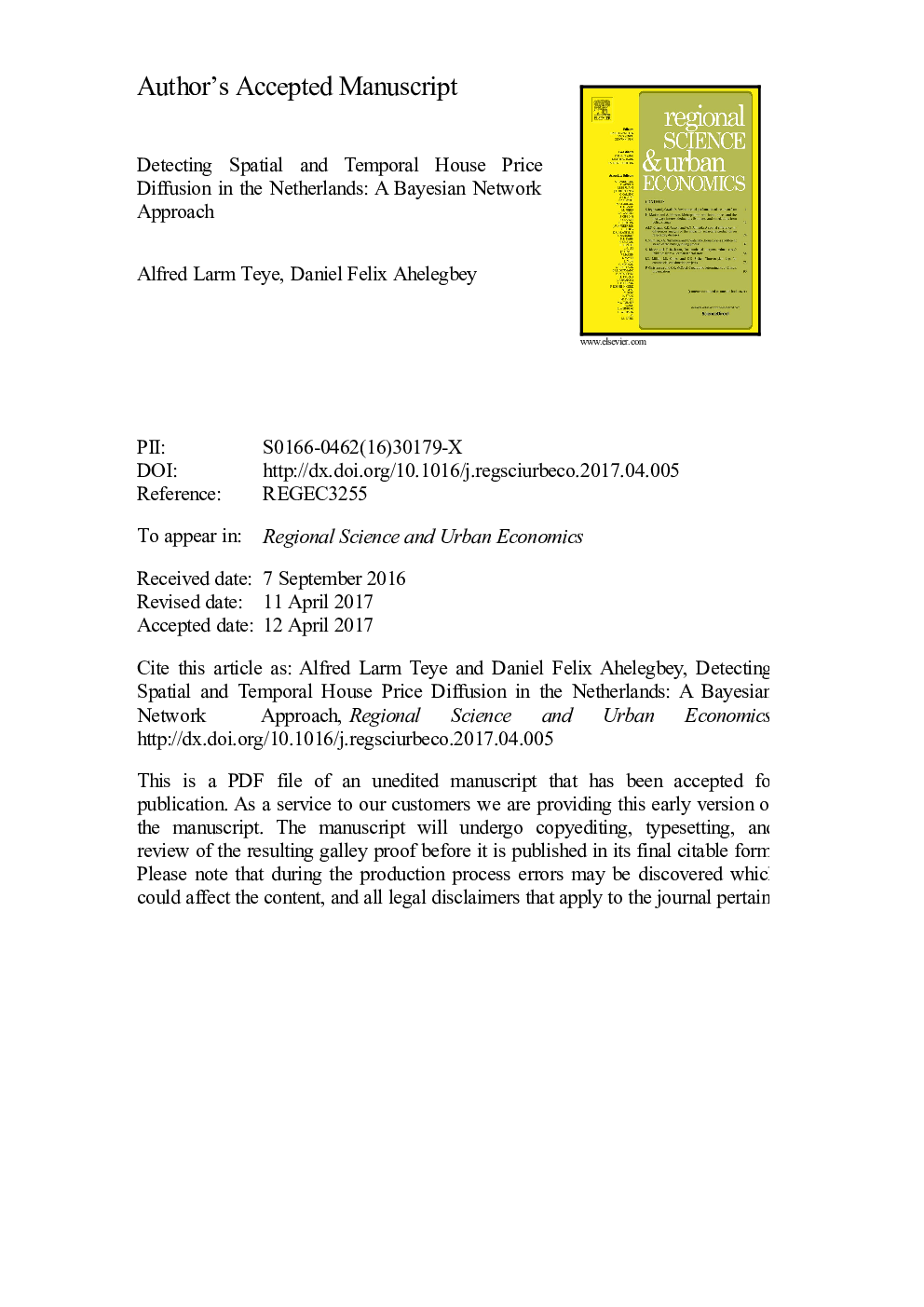| Article ID | Journal | Published Year | Pages | File Type |
|---|---|---|---|---|
| 5103688 | Regional Science and Urban Economics | 2017 | 21 Pages |
Abstract
Following the 2007-08 Global Financial Crisis, there has been a growing research interest on the spatial interrelationships between house prices in many countries. This paper examines the spatio-temporal relationship between house prices in the twelve provinces of the Netherlands using a recently proposed econometric modelling technique called the Bayesian Graphical Vector Autoregression (BG-VAR). This network approach is suitable for analysing the complex spatial interactions between house prices. It enables a data-driven identification of the most dominant provinces where temporal house price shocks may largely diffuse through the housing market. Using temporal house price volatilities for owner-occupied dwellings from 1995Q1 to 2016Q1, the results show evidence of temporal dependence and house price diffusion patterns in distinct sub-periods from different provincial housing sub-markets in the Netherlands. In particular, the results indicate that Noord-Holland was most predominant from 1995Q1 to 2005Q2, while Drenthe became most central in the period 2005Q3-2016Q1.
Related Topics
Social Sciences and Humanities
Economics, Econometrics and Finance
Economics and Econometrics
Authors
Alfred Larm Teye, Daniel Felix Ahelegbey,
